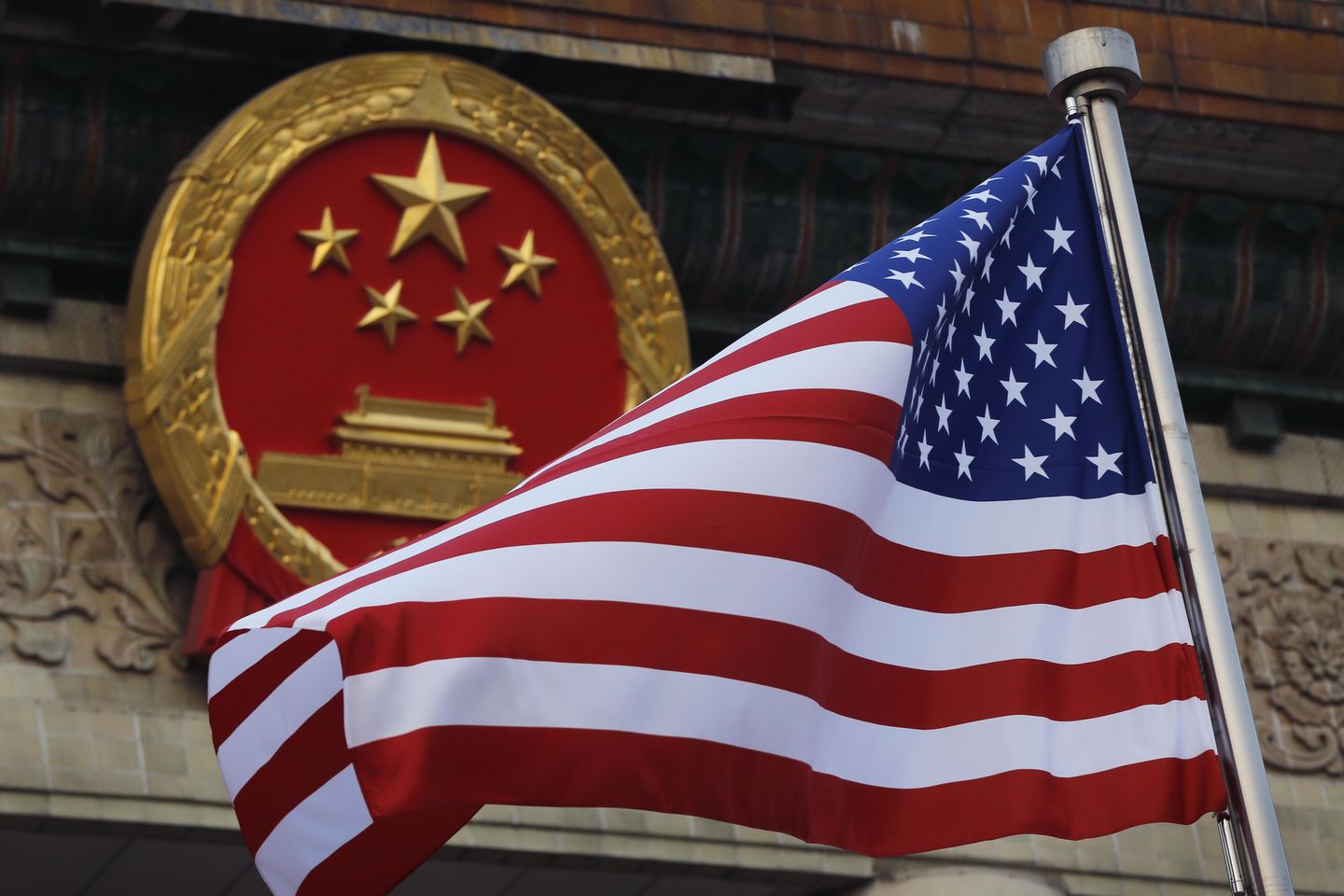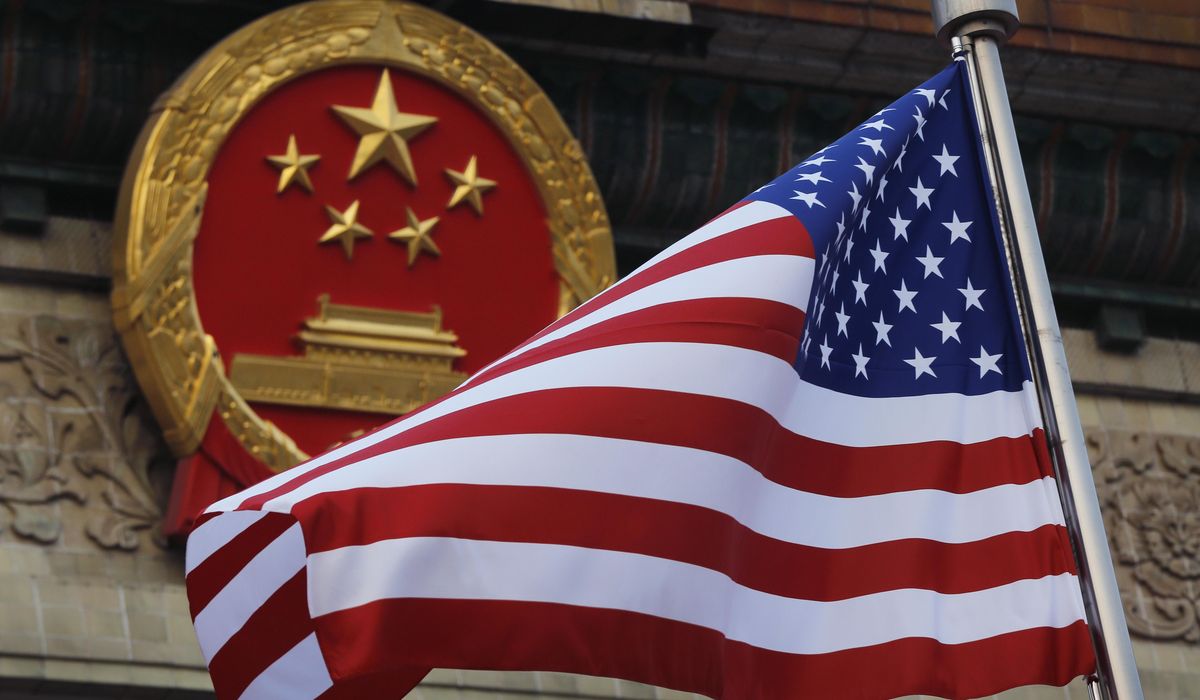

China’s human spying, cyber espionage and more recently covert disinformation operations are a “600-pound gorilla in the room” of foreign counterintelligence threats, according to a Senate report on the growing problem of adversary spying.
The heavily-redacted report by the Senate Select Committee on Intelligence warns that the U.S. government’s central counterintelligence agency and other components are ill-equipped and poorly structured to counter growing foreign spy threats.
Foreign intelligence agents and hackers from China, Russia, Iran, North Korea and others are engaged in obtaining secrets and technology from both U.S. government agencies and the private sector with little resistance from counterintelligence agencies, the report states, but one threat stands above all others.
“China, however, is the ‘600-pound gorilla in the room,’” the report states.
The report was made public late last month and is largely focused on the National Counterintelligence and Security Center (NCSC), a relatively new agency set up to be the key policymaking center for counterintelligence units. The center is part of the Office of the Director of National Intelligence.
“NCSC, as the U.S. [government] lead for [counterintelligence], lacks a clear mission as well as sufficient and well-defined authorities and resources to effectively confront this landscape,” the report said. “Moreover, NCSC’s placement within the Office of the Director of National Intelligence may hinder its ability to scale and respond to threats in an agile manner. Despite these challenges, there is no consensus among [counterintelligence] officials on a way forward for NCSC.”
SEE ALSO: Chinese researchers leaving the U.S. amid rising tensions, study finds
A spokesman for NCSC said the center appreciates the panel’s report on ways to improve the center’s operations and will continue to work with the committee on the matter.
The report is part of an ongoing committee investigation into U.S. counterintelligence capabilities. The last legislation on the topic was enacted in 2002 and is deficient in addressing cyber and technology collection by foreign intelligence services, senators and experts said during a hearing on the report.
One suggestion for improving counterspy efforts would be to make NCSC a separate agency similar to Britain’s domestic counterintelligence agency, MI-5. Currently, the FBI is charged with conducting counterintelligence operations in the United States and the CIA takes the lead on threats from abroad.
The gap in responsibilities between the agencies has been exploited for decades by foreign spy services that have recruited spies and stolen extremely-damaging secrets from nearly every national security agency and the military. The 152-page report identifies shortfalls in U.S. counterintelligence but does not offer clear solutions.
“I’d love to say that report came up with a series of specific recommendations. It did not,” said Committee Chairman Mark Warner, Virginia Democrat.
Mr. Warner said he has doubts about creating a separate counterspy agency but added that the committee is thoroughly investigating the possibility.
China threat
The report outlines several ways China in particular is gathering secrets and information in the United States. The operations range from traditional approaches such as planting spies in intelligence and defense agencies to newer methods of cyberespionage from computer networks. China’s spies also are targeting agencies not involved in national security, private-sector businesses and academia.
Chinese intelligence is also engaged in covert influence operations that support its other spy operations.
Targeting of university researchers for technology and other know-how also is a key tool.
A list of targets of Chinese intelligence operations was mostly blacked out in the report — except Beijing’s efforts to infiltrate U.S. critical infrastructure, such as the electrical grid and the financial sector.
Beijing’s spies, hackers and influence agents “launched a full-scale campaign to develop or acquire technologies [China] deems critical to its national interests,” the report added.
China is approaching parity with the United States in gross domestic product and in certain elements of its military power.
The United States, over the past 40 years, also became “interdependent” with China, unlike past adversaries such as the Soviet Union.
“China seeks to first displace the United States as the regional power in East Asia, and then to eventually displace the United States as the global hegemon,” the report said.
The confrontation with China is unlike the Cold War standoff with the Soviet Union, which was both military and ideological. The current rivalry with China is being waged across the economic, technological, military, diplomatic and ideological spectrums.
Acquiring technology is key to Chinese strategy and plans and is regarded as the main enabler of both economic growth and national power.
Targets of Chinese intelligence gathering include artificial intelligence, quantum computing, integrated circuits, genetics and biotechnology, high end new materials, new energy and intelligent vehicles, smart manufacturing, aerospace engines and gas turbines, deep space, deep earth, deep sea, and polar exploration, among others, the report said.
“It is important to emphasize that China is an authoritarian nation that makes little distinction between its public and private sectors,” the report said.
The Chinese system does not distinguish between civilian and military sectors and calls for “fusing” technology and resources for both.
China’s full-throated spying approach uses all available means of collection from human spying, technical collection, and cyber espionage, to penetrate the government, private sector, and academia, the report said.
Currently, the FBI is investigating over 2,000 cases of Chinese technology and information theft.
The Chinese intelligence agencies also are using “gray zone” warfare – below the level of armed conflict – against the United States, the report said.
Non-intelligence assets
One unique feature of Chinese operations is the use of non-intelligence assets, including businesspeople, students and researchers at U.S. laboratories.
The FBI reported that Beijing’s “massive, sophisticated computer hacking programs” are the largest in the world. Chinese cyber forces operate from every major city in China, with robust funding and sophisticated hacking tools, the report said.
The NCSC views countering Chinese influence operations as part of its counterspy mission. The report said China’s network of Confucius Institutes – Beijing-funded language and culture centers – are used as tools by government intelligence.
China has also tried to exploit Americans’ doubts about U.S. leaders, undermine democracy, and seek to promote a positive image of China, the report said. China has spread COVID-19 disinformation by claiming the United States created the virus and has stepped up activities that seek to mold public discourse and mute criticism of China’s repressive policies toward minority Uyghurs.
Sen. Marco Rubio, Florida Republican and vice chairman of the committee, said the Chinese conduct long-term intelligence recruitment of younger Americans in their twenties who can be used in the future to promote policies and narratives favorable to China, such as regarding Taiwan or Tibet.
“Twenty years from now, these individuals will be running companies or key agencies in government and maybe even elected,” Mr. Rubio said. “This is a multifaceted, new-era type challenge, which our agencies simply weren’t created to function.”
Michelle Van Cleave, former national counterintelligence executive, told the committee the current structure of counterintelligence agencies is not designed to effectively halt foreign spies, noting that the “best defense is a good offense.”
“But unfortunately, our counterintelligence enterprise has never been configured to be able to preempt,” she said. “Preemption requires strategic national planning and coordinated operations against foreign intelligence threats. By contrast, our [counterintelligence] agencies have very distinct and separate missions, and they operate within their own lanes.”
